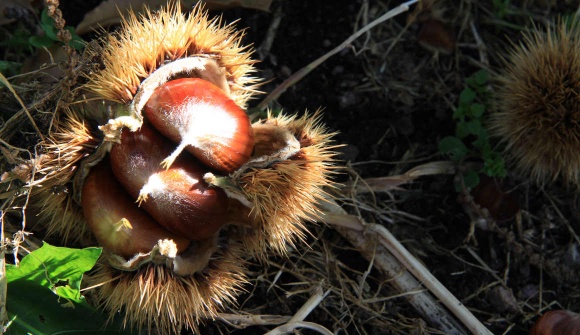The olive was native to Asia Minor and spread from Iran, Syria and Palestine to the rest of the Mediterranean basin 6,000 years ago. It is among the oldest known cultivated trees in the world, being grown before the written language was invented. It was being grown on Crete by 3,000 BC and may have been the source of the wealth of the Minoan kingdom. The Phoenicians spread the olive to the Mediterranean shores of Africa and Southern Europe. Olives have been found in Egyptian tombs from 2,000 years BC. The olive culture was spread to the early Greeks then Romans. As the Romans extended their domain they brought the olive with them.

Olive oil was used for variety of purposes, including lamp fuel, pharmaceutical ointment and in rituals for anointing royalty, warriors and others. The term "messiah", used in many Mediterranean-based religions, means "the anointed one", perhaps referring to an olive oil-based ritual. Cooking with olive oil may not have been a purpose for the original domestication, but it began at least as long ago as the 5th-4th century BC.

Throughout the various civilizations, the olive tree and olive oil have occupied pivotal positions in the agricultural economy of Mediterranean countries and in their commerce with neighbouring populations. The Minoans of Crete were among the first cultures to achieve prosperity on olive oil, and Crete continues to be an important olive production area to the present day.
There are many different kinds of olive varieties from which oil can be produced, and each brings a unique flavor and quality to the oil. Olive oils described as ‘virgin’ are those that have been obtained from the original fruit without having been synthetically treated. Once the olives have been picked, pressed, and washed, no other process has taken place other than decantation, and centrifugation to extract the oil, and filtration.
Extra virgin is the highest quality and most flavorful olive oil classification. In chemical terms it is described as having a free acidity, expressed as oleic acid, of not more than 0.8 grams per 100 grams. It must be produced entirely by mechanical means without the use of any solvents, and under temperatures that will not degrade the oil (less than 86°F, 30°C).
The wonderful flavours of olive oil are what set it apart from all other vegetable and seed oils.
Try this amazing product made by a BIO Farm, Agricola Persiani.
Atri, AbruzzI. ITALY


The Company is located in the outskirts of Atri, in San Martino, behind Gran Sasso’s peaks and facing the Adriatic Sea. The location, the soil and the climate make these hills particularly suited to grow olive trees. The company reaches today an area of 20 hectares in which there are 6000 ca. olive trees of the main native cultivars.
The Persiani’s Company uses natural Organic fertilizers; no fertilizers or chemical treatments are ever used. Persiani is equipped with a modern oil mill in a continuous cicle.
Close your Eyes and Dream...




